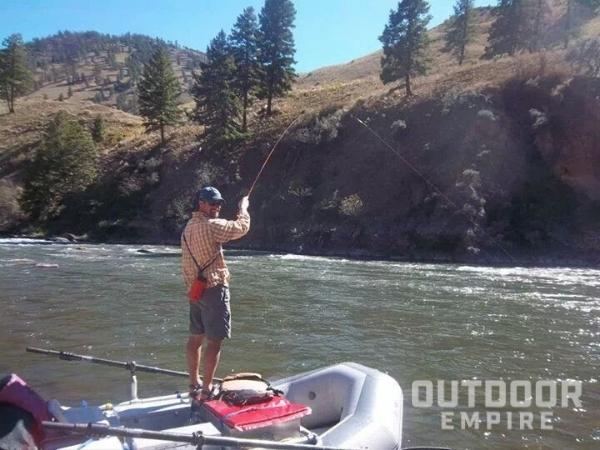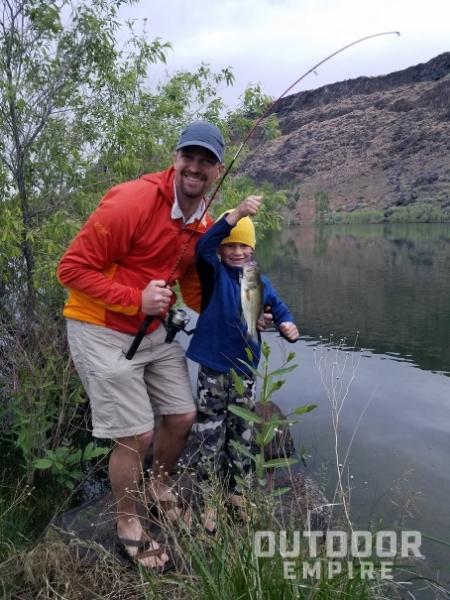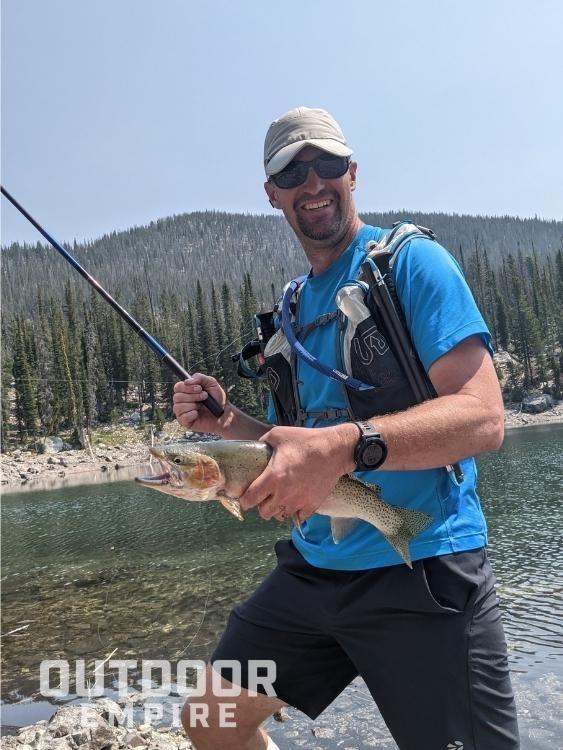I have been a fisherman for the past 20 years. I love fishing, but I have a secret: I don’t like the way fish tastes.
Like the comedian Jim Gaffigan said, “You know what tastes good on fish? Anything that covers the taste of fish.”
Many fishermen love to harvest and eat fish regularly, which is fine, but I don’t. I like to catch fish and then let them go.
Early Catch and Release Fishing
Catch and release ethos have been around for a long time. The first written record appeared in 1496 by a nun named Dame Juliana Berners. She wrote a book called A Treatyse of Fysshynge wyth an Angle.
First, let me say that I wish that spelling of fish would have stuck.
In her book, she stated, “Nor should a man ever carry his amusement to excess, and catch too much at one time; this is to destroy his future pleasure and to interfere with that of his neighbours.”
Early 1900’s North American proponents including Thaddeus Norris and William Henry pushed the philosophy of catch and release to a new generation of anglers. Lee Wulff was probably the most famous of these early evangelists.
In 1939 he inspired the movement by saying, “Game fish are too valuable to be caught only once,” and “The fish you release is your gift to another angler, and remember, it may have been someone’s similar gift to you.”
The movement continued to grow in strength. In the 1950s, catch and release were first codified by the state of Michigan. They created “no-kill zones” to reduce the cost of restocking lakes. The movement caught on, and it has become a management tool used by fish and game managers across the US.
More than a management tool, catch and release methods became a way of life for many fishermen. This new breed of fisherman now goes out to the stream without any intention of bringing any fish home for supper.
Opposition to Catch and Release Fishing
There have been other voices that disagree that catch and release fishing is a wholesome activity. PETA is probably one of the strongest opponents of catch and release.
To be fair, they are against all forms of fishing, but it is not just PETA who is against it. Several countries in Europe have made it illegal, stating that it is against their animal cruelty laws. You can still catch and harvest fish within the legal limit, but you can’t throw them back.
Is it Cruel to Catch and Release Fish?
To be cruel, you have to willfully cause pain and suffering to the animal. Despite what PETA and other organizations would have you believe, there is no evidence that fishing causes pain.
Quantifying pain is difficult even in humans. Pain is generally described and then rated on a scale of 1 to 10. To have pain, there needs to be pain receptors and then a psychological response to that pain. As difficult as it is for humans to validate pain, it is almost impossible to say if fish feel pain or not.
While it is true that fish have been found to have nociceptors, or receptors responsible for pain, those found in the fish are mainly responsible for reflex action. Imagine hearing a loud noise and jumping back; that is a reflex action but you experience no actual pain.
Here is a great research article that examines the belief that fish may feel pain and why that is likely not true:
Fish do not feel pain and its implications for understanding phenomenal consciousness
Do Fish Remember Being Caught

To this I have no scientific proof, just anecdotal evidence.
One day I was fishing in the beautiful, deep, and clear pool that sits below Power House rapid on the Middle Fork of the Salmon River. As I delicately placed my fly on the water, I could see a fish rising from the pool’s depths, heading straight at my fly.
I got ready to set the hook in anxious anticipation, but just as the fish got close, it stopped, looked at me, laughed in my face then swam back to the bottom of the pool. Probably to tell his fish buddies about the idiot on dry land trying in vain to catch fish.
From my experience, when an area is heavily fished, the fish become harder to catch. But those fish that see little pressure are easier to catch.
Do fish remember being caught? In my experience, it seems that they do, but not so much so that it keeps them from feeding and leading a healthy life.
My Introduction to Fishing

My dad took me fishing when I was young, just like his dad took him. He was not a good fisherman. In fact, he used to say, “If you caught fish, it would be called catching.”
My dad fished quite a bit and did little catching, but my dad didn’t seem to care. He always just seemed to be having a great time being in the woods and hanging out with his son. My dad taught me that enjoyment didn’t necessarily come from the result. He taught me to enjoy the process.
My next fishing mentor was a man by the name of Dennis Jesse. He was tall and lanky with a tanned leather face from spending most of his life outside. Dennis spent his winters as a carpenter in Jackson Hole and his summers guiding whitewater rivers in Idaho. He was also a lifelong fly fisherman and, unlike my dad, knew how to catch fish.
We worked together as rafting guides on the Middle Fork of the Salmon River in central Idaho. Dennis taught me how to read water, cast, pick the right fly and drift a dry fly over where the fish were holding. Everything that I know about catching fish is because of Dennis.
However, the most important thing he taught me was how to release fish properly, causing the least amount of harm possible. Indeed, since we would do trips down the same river all summer long, the gift we were giving was hopefully to ourselves.
Do Fish Die After Being Released
The mortality rate of caught and released fish is an important detail to think about. In a review of catch and release literature done by Aaron Bartholomew and James A. Bohnsack, it was noted that the mean mortality was 19%. This is the number commonly thrown around by groups that oppose catch and release fishing.
As most things are, the issue is more nuanced than just a single number. That number includes a lot of different fish species in both fresh and saltwater. Plus, there were no mitigation efforts employed.
There is a right and wrong way to handle caught fish if you expect to let them go and survive. In the trout population, it has been shown that the mortality rate can be reduced to 1% to 2% with proper handling and release techniques. This is a much more acceptable number.
How to Release Fish Properly
These are the techniques that Dennis taught me all those years ago on the Middle Fork of the Salmon and have been shown to work.
1. Don’t fight fish to exhaustion.
2. Minimize the amount of time that the fish is out of the water.
3. Use a device to unhook the fish to minimize or eliminate touching it. I have used and have had good results with the Ketchum Release, but homemade devices can also work.
4. Cut the line of a gut hooked fish.
5. Use single barbless hooks.
6. Use artificial lures and flies.
Conclusion
The reason we practice catch and release is a complicated amalgamation of cultural heritage, social norms, and traditions that are passed down from generation to generation. This is a tradition that I am excited to pass on to my children, just as my dad taught me.
However, all of this is too hard to explain in a casual conversation, so when people ask, I usually just answer that I love to catch fish but I hate the way they taste.
Related: Can You Eat Koi Fish?





